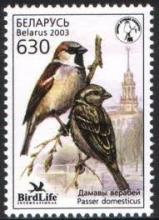Im Bergischen Land steht der Haussperling bereits auf der Vorwarnliste
Wohl jeder kennt ihn, den weltweit verbreiteten, in nahezu sämtlichen Siedlungen vorkommenden Haussperling (Passer domesticus) oder Spatz. Im Bergischen Land steht der Haussperling bereits auf der Vorwarnliste und ist in manchen Ortschaften gar nicht mehr zu finden. Während sich ausgewachsene Haussperlinge vorwiegend von Körnern und Samen ernähren - beliebt sind auch Speisereste von unseren Tellern, seien es nun Kuchenkrümel oder Obstabfälle-, werden Jungvögel in den ersten Tagen fast ausschließlich mit tierischer Nahrung wie Insekten und Raupen gefüttert. Ein Rückgang von Insekten durch Einsatz von Pestiziden und artenarme Gärten führt demnach auch zu Problemen für den Sperling. Außerdem wird das Körner-Finden in unserer immer "sauberer" werdenden Landwirtschaft und Tierhaltung zunehmend schwierig. Wer Haussperlinge und andere Singvögel schützen möchte, sollte auf eine naturnahe (Insekten-freundliche) Gartengestaltung achten, auf Gifteinsatz bei der Pflanzenpflege verzichten sowie Nistgelegenheiten schaffen und erhalten.










